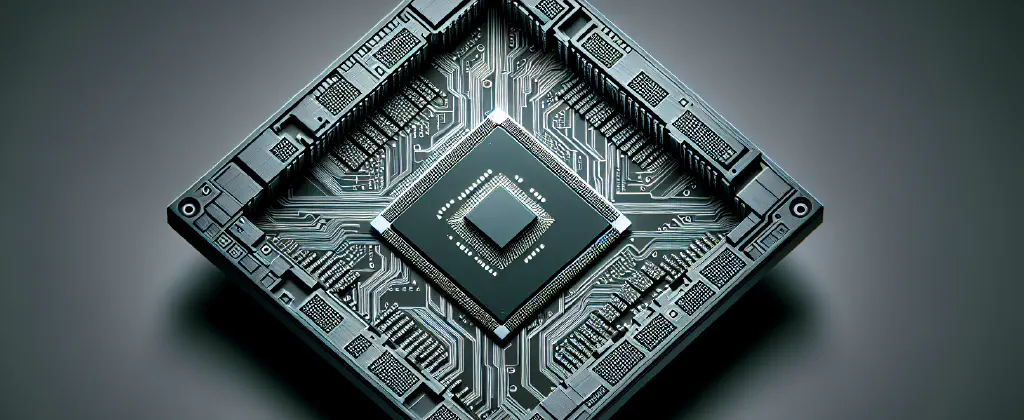13. December 2023
Cortex A57: A Deeper Look Into Nintendo Switch's CPU

The Nintendo Switch has been a popular gaming console since its release, known for its versatility and unique design. One of the key components powering the Nintendo Switch is the Cortex A57 CPU. In this article, we will take a closer look at the Cortex A57 CPU and explore some insights about Nintendo’s choice of this particular CPU for the Switch.
The Power Configuration and Bug
The Cortex A57 CPU is part of the Nvidia Tegra X1 SoC (System on Chip), which also contains a cluster of four A53 cores for power-efficient processing. However, Nintendo made an interesting decision to not use the A53 cores. According to rumors, there is a bug in the system crossbar that prevents using both the A57 and A53 cores simultaneously. Enabling one cluster after reset locks out the other cluster, making it a one-time choice. This bug can be triggered even if the first cluster is disabled when enabling the second one.
The reason behind this bug remains unclear. Some suggest it may be related to issues with system reset and selection pins, which determine the boot-time cluster. However, without official confirmation, we can only rely on rumors and speculation.
The Broken A53 Cores
It’s worth noting that the A53 cores used in the Tegra X1 SoC have been a subject of controversy. According to sources, later versions of the technical manual removed all references to the A53 cores due to their flawed design. There are debates about their existence in the Tegra X1+ chips used in the Nintendo Switch since 2018-2019.
Nintendo’s Strategy and the Lateral Thinking Approach
Nintendo’s hardware design decisions have often been a topic of discussion. One user mentioned Gunpei Yokoi’s ethos of “lateral thinking with withered technology.” This concept involves using imperfect or “seasoned” technology in creative ways. Embracing this philosophy, Nintendo may have chosen the Tegra X1 SoC despite its flaws to fit their needs and align with their approach of utilizing technology in innovative ways.
However, some users have expressed skepticism about the lateral thinking approach and instead attribute Nintendo’s hardware decisions to cost-cutting practices. Nintendo has been known to prioritize profit margins, sometimes at the expense of features or performance.
Nintendo’s Hardware Design Choices
Nintendo’s hardware design choices have sparked debate throughout the years. One notable example is the Nintendo 64, which pushed the boundaries of graphics but used a cartridge format that limited storage and required games to be chopped up when ported. However, proponents of Nintendo’s design choices argue that these decisions were made to optimize gaming experiences and tailor software to specific hardware capabilities.
In the case of the Nintendo Switch, the Tegra X1 SoC was chosen, potentially due to a good deal or discount offered by Nvidia. It is worth considering that Nintendo may have been involved in the selection of the chip before it was complete and in consumer products, as suggested by one user.
The Nintendo Switch’s Development and Tegra X1
The development timeline of the Nintendo Switch raises questions about the selection of the Tegra X1 SoC. The chip had been used in the Nvidia Shield and was not originally intended for Nintendo. Some speculate that Nintendo chose the Tegra X1 due to a good deal offered by Nvidia, even though the chip had a known bug in the recovery mode. Nintendo’s decision could have been influenced by the need to stick to the announced Switch launch date and recover from the financial performance of the Wii U.
The Value of Console Contracts
Console contracts are highly sought after by chipmakers. Despite potential losses on the initial units sold, long-term sales and guaranteed revenue make console contracts appealing. AMD’s success with the PlayStation 4 and Xbox One is a testament to the benefits chipmakers can gain from these partnerships.
Conclusion
The Cortex A57 CPU is a crucial component of the Nintendo Switch, powering its gaming performance. While the decision to not use the A53 cores and the bug in the system crossbar may raise questions, Nintendo’s strategy and hardware design choices reflect their unique approach. Whether driven by lateral thinking with withered technology or cost-cutting measures, Nintendo has continued to create innovative gaming experiences that captivate players worldwide.